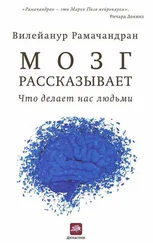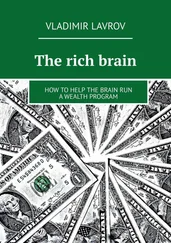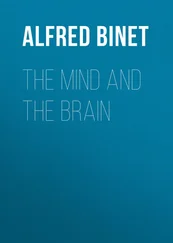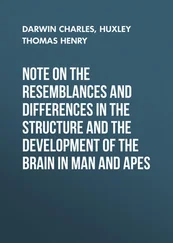Ramachandran has now joined these grand science writers with his closely observed and deeply serious but beautifully readable book Phantoms in the Brain . It is one of the most original and accessible neurology books of our generation.
—Oliver Sacks, M.D.
In any field, find the strangest thing and then explore it.
—John Archibald Wheeler
This book has been incubating in my head for many years, but I never quite got around to writing it. Then, about three years ago, I gave the Decade of the Brain lecture at the annual meeting of the Society for Neuroscience to an audience of over four thousand scientists, discussing many of my findings, including my studies on phantom limbs, body image and the illusory nature of the self. Soon after the lecture, I was barraged with questions from the audience: How does the mind influence the body in health and sickness?
How can I stimulate my right brain to be more creative? Can your mental attitude really help cure asthma and cancer? Is hypnosis a real phenomenon? Does your work suggest new ways to treat paralysis after strokes? I also got a number of requests from students, colleagues and even a few publishers to undertake writing a textbook. Textbook writing is not my cup of tea, but I thought a popular book on the brain dealing mainly with my own experiences working with neurological patients might be fun to write. During the last decade or so, I have gleaned many new insights into the workings of the human brain by studying such cases, and the urge to communicate these ideas is strong. When you are involved in an enterprise as exciting as this, it’s a natural human tendency to want to share your ideas with others. Moreover, I feel that I owe it to taxpayers, who ultimately support my work through grants from the National Institutes of Health.
Popular science books have a rich, venerable tradition going as far back as Galileo in the seventeenth century.
Indeed, this was Galileo’s main method of disseminating his ideas, and in his books he often aimed barbs at an imaginary protagonist, Simplicio — an amalgam of his professors. Almost all of Charles Darwin’s famous books, including The Origin of Species, The Descent of Man, The Expression of Emotions in Animals and Men, The Habits of Insectivorous Plants — but not his two-volume monograph on barnacles! — were written for the lay reader at the request of his publisher, John Murray. The same can be said of the many works of Thomas Huxley, Michael Faraday, Humphry Davy and many other Victorian scientists. Faraday’s Chemical History of a Candle , based on Christmas lectures that he gave to children, remains a classic to this day.
I must confess that I haven’t read all these books, but I do owe a heavy intellectual debt to popular science books, a sentiment that is echoed by many of my colleagues. Dr. Francis Crick of the Salk Institute tells me that Erwin Schrödinger’s popular book What Is Life? contained a few speculative remarks on how heredity might be based on a chemical and that this had a profound impact on his intellectual development, culminating in his unraveling the genetic code together with James Watson. Many a Nobel Prize-winning physician embarked on a research career after reading Paul de Kruif’s The Microbe Hunters , which was published in 1926. My own interest in scientific research dates back to my early teens, when I read books by George Gamow, Lewis Thomas, and Peter Medawar, and the flame is being kept alive by a new generation of writers — Oliver Sacks, Stephen Jay Gould, Carl Sagan, Dan Dennett, Richard Gregory, Richard Dawkins, Paul Davies, Colin Blakemore and Steven Pinker.
About six years ago I received a phone call from Francis Crick, the codiscoverer of the structure of deoxyribonucleic acid (DNA), in which he said that he was writing a popular book on the brain called The Astonishing Hypothesis . In his crisp British accent, Crick said that he had completed a first draft and had sent it to his editor, who felt that it was extremely well written but that the manuscript still contained jargon that would be intelligible only to a specialist. She suggested that he pass it around to some lay people. “I say, Rama”, Crick said with exasperation, “the trouble is, I don’t know any lay people. Do you know any lay people I could show the book to?” At first I thought he was joking, but then realized he was perfectly serious.
I can’t personally claim not to know any lay people, but I could nevertheless sympathize with Crick’s plight.
When writing a popular book, professional scientists always have to walk a tightrope between making the book intelligible to the general reader, on the one hand, and avoiding oversimplification, on the other, so that experts are not annoyed. My solution has been to make elaborate use of end notes, which serve three distinct functions: First, whenever it was necessary to simplify an idea, my cowriter, Sandra Blakeslee, and I resorted to notes to qualify these remarks, to point out exceptions and to make it clear that in some cases the results are preliminary or controversial. Second, we have used notes to amplify a point that is made only briefly in the main text — so that the reader can explore a topic in greater depth. The notes also point the reader to original references and credit those who have worked on similar topics. I apologize to those whose works are not cited; my only excuse is that such omission is inevitable in a book such as this (for a while the notes threatened to exceed the main text in length). But I’ve tried to include as many pertinent references as possible in the bibliography at the end, even though not all of them are specifically mentioned in the text.
This book is based on the true-life stories of many neurological patients. To protect their identity, I have followed the usual tradition of changing names, circumstances and defining characteristics throughout each chapter. Some of the “cases” I describe are really composites of several patients, including classics in the medical literature, as my purpose has been to illustrate salient aspects of the disorder, such as the neglect syndrome or temporal lobe epilepsy. When I describe classic cases (like the man with amnesia known as H.M.), I refer the reader to original sources for details. Other stories are based on what are called single-case studies, which involve individuals who manifest a rare or unusual syndrome.
A tension exists in neurology between those who believe that the most valuable lessons about the brain can be learned from statistical analyses involving large numbers of patients and those who believe that doing the right kind of experiments on the right patients — even a single patient — can yield much more useful information. This is really a silly debate since its resolution is obvious: It’s a good idea to begin with experiments on single cases and then to confirm the findings through studies of additional patients. By way of analogy, imagine that I cart a pig into your living room and tell you that it can talk. You might say, “Oh, really? Show me.” I then wave my wand and the pig starts talking. You might respond, “My God! That’s amazing!” You are not likely to say, “Ah, but that’s just one pig. Show me a few more and then I might believe you.” Yet this is precisely the attitude of many people in my field.
I think it’s fair to say that, in neurology, most of the major discoveries that have withstood the test of time were, in fact, based initially on single-case studies and demonstrations. More was learned about memory from a few days of studying a patient called H.M. than was gleaned from previous decades of research averaging data on many subjects. The same can be said about hemispheric specialization (the organization of the brain into a left brain and a right brain, which are specialized for different functions) and the experiments carried out on two patients with so-called split brains (in whom the left and right hemispheres were disconnected by cutting the fibers between them). More was learned from these two individuals than from the previous fifty years of studies on normal people.
Читать дальше












